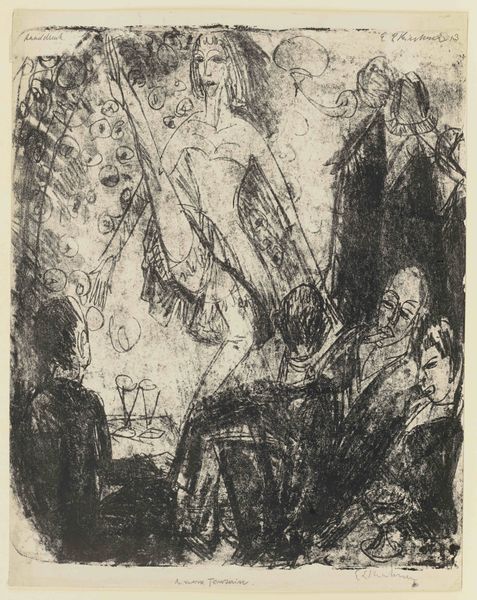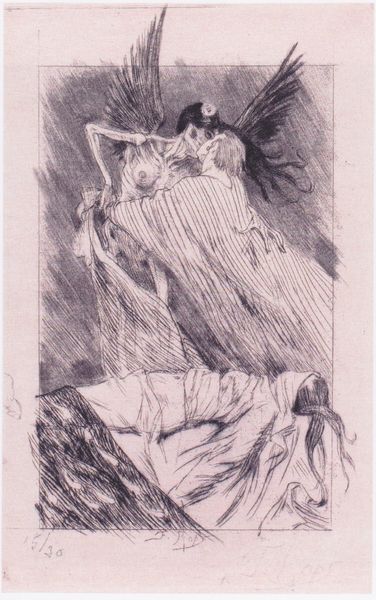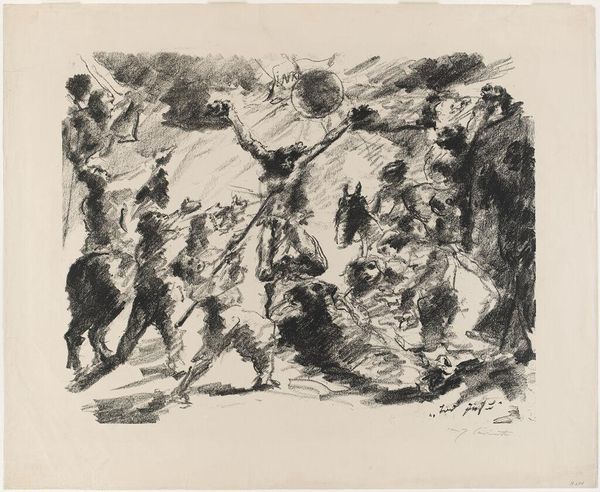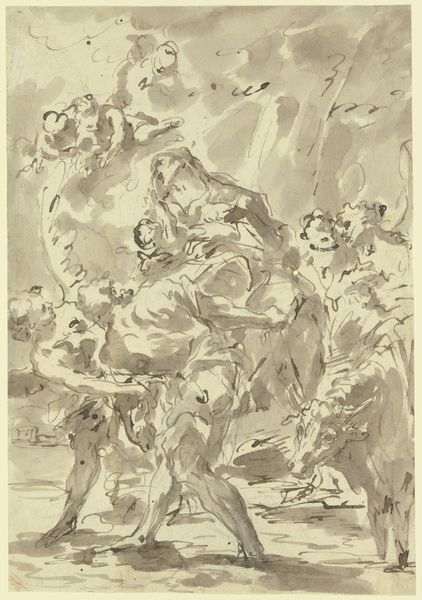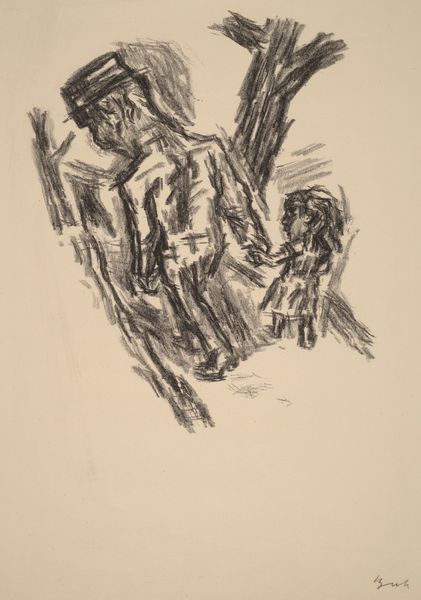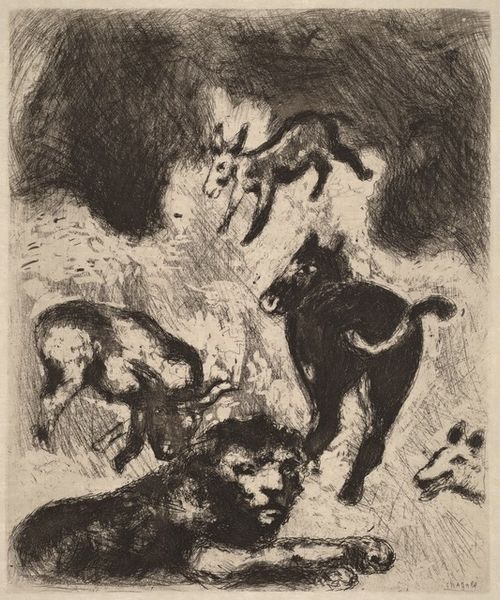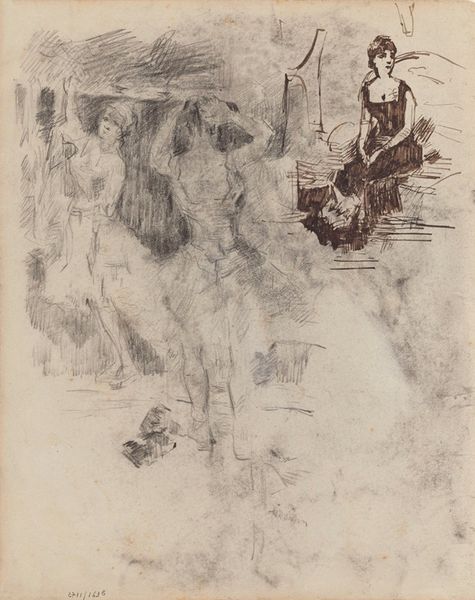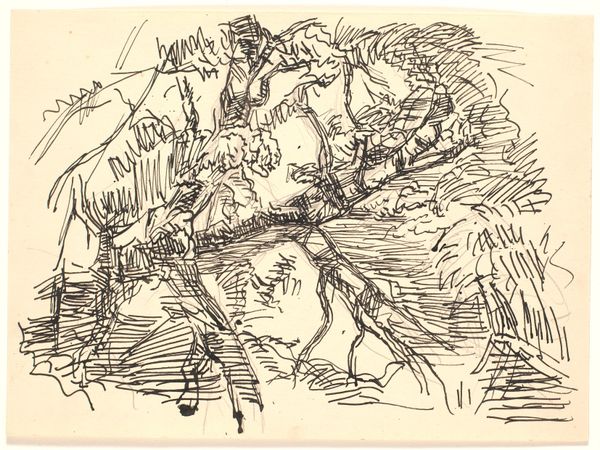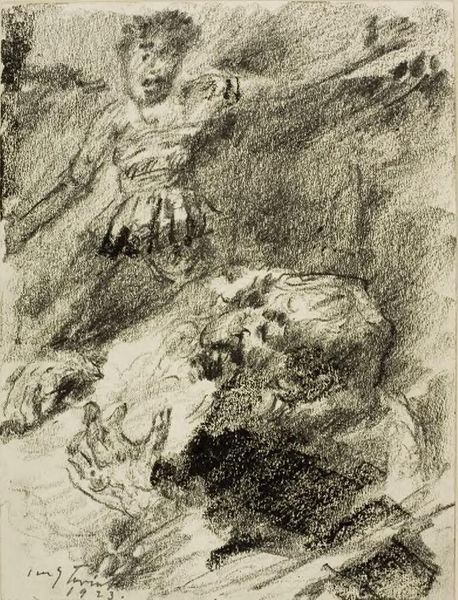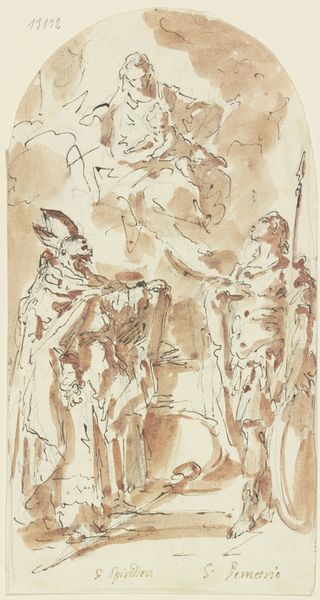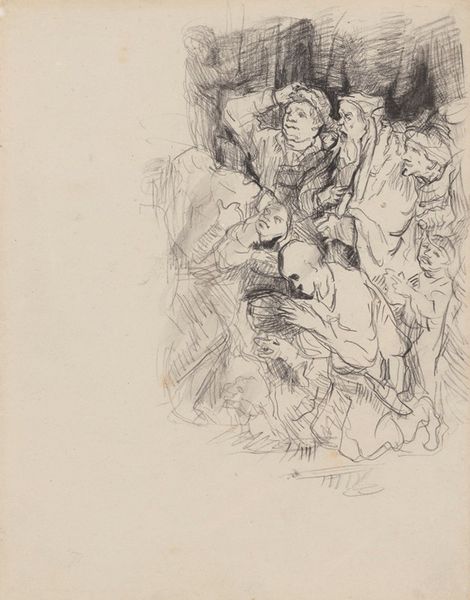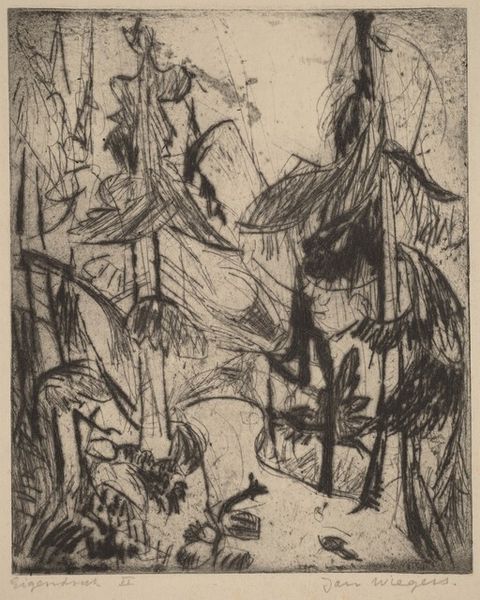
drawing, ink
#
drawing
#
ink drawing
#
narrative-art
#
figuration
#
ink
#
expressionism
#
history-painting
Copyright: Public Domain: Artvee
Editor: This is Lovis Corinth’s “Martyrium,” created in 1921, using ink. It’s quite a chaotic scene; it almost feels unfinished, raw. What is your perspective on this piece? Curator: The rawness you perceive reflects a crucial aspect: Corinth’s process. Forget idealised representations; instead, look at the material reality of art-making. The hasty, expressive strokes, the very quality of the ink used. Notice how they aren't just depicting a scene; they are _producing_ it. How does this visible labor affect your understanding? Editor: It makes the suffering feel… more visceral, I guess? Less polished and distant, more immediate and felt. I can almost see his hand moving. Curator: Precisely. Consider too, that 1921 was post-World War I. Expressionism rejected academic norms to create an art engaged with its period. "Martyrium", beyond the biblical subject, shows a culture’s anxiety rendered with the anxious energy of its creation. This connects high art with immediate social turmoil through the artist's very labor and chosen material. What might the accessibility of ink as a medium suggest about who could make and consume art like this? Editor: Maybe it allowed more artists to engage with these themes, outside of traditional patronage systems? Curator: Yes, and by using such immediate material Corinth opens to us to what it means to *make* this statement about suffering, versus, say, commissioning an oil painting in a grand historical style. This isn't just about _what_ it depicts, but _how_ it was made, and who had access to that making. Editor: So, by looking at the materials and the process, we understand not only the artist's intention but also the social and economic context of the work itself. That's fascinating! Thanks for pointing out that point of view! Curator: Indeed, analyzing art materially reveals its engagement with the broader world. This approach unveils stories beyond aesthetics and interpretation alone.
Comments
No comments
Be the first to comment and join the conversation on the ultimate creative platform.
